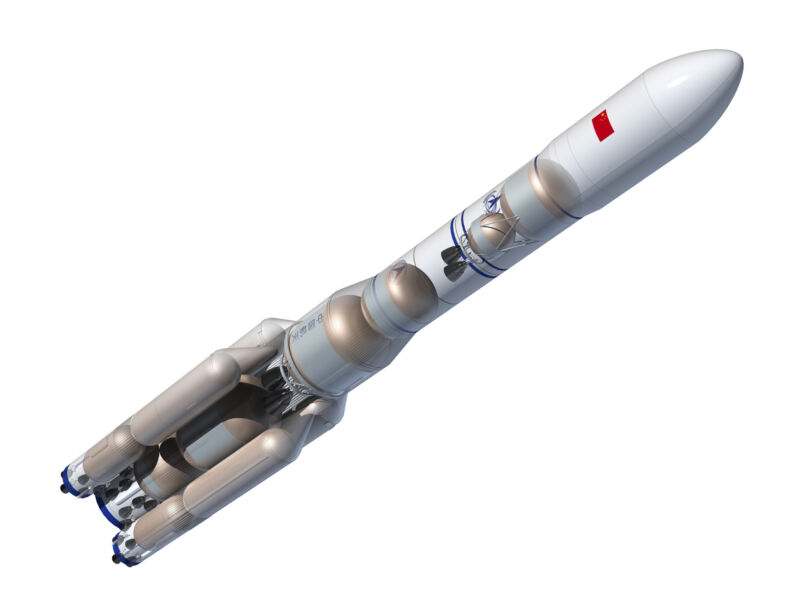China ditches expendable rocket plan for its Moon program

Enlarge / This is a rendering of an earlier version of the Long March 9 rocket, with an expendable design and side mounted boosters. (credit: Adrian Mann/Stocktrek Images/Getty Images)
When China started to get serious about sending its astronauts to the Moon in the middle of the last decade, the country's senior rocket scientists began to plan a large booster to do the job.
In 2016 the country's state-owned rocket developer, the China Academy of Launch Vehicle Technology, began designing the "Long March 9" rocket. It looked more or less like the large heavy lifter NASA was designing at the time, the Space Launch System. Like NASA's large rocket, the Long March 9 had a core stage and boosters and was intended to be fully expendable.
There were some key differences, particularly in propellants-the Long March 9 would use kerosene, instead of liquid hydrogen-but the general idea was the same. China would build a single-use, super heavy lift rocket to launch its astronauts to the Moon. The country set a goal of flying the rocket by 2030.